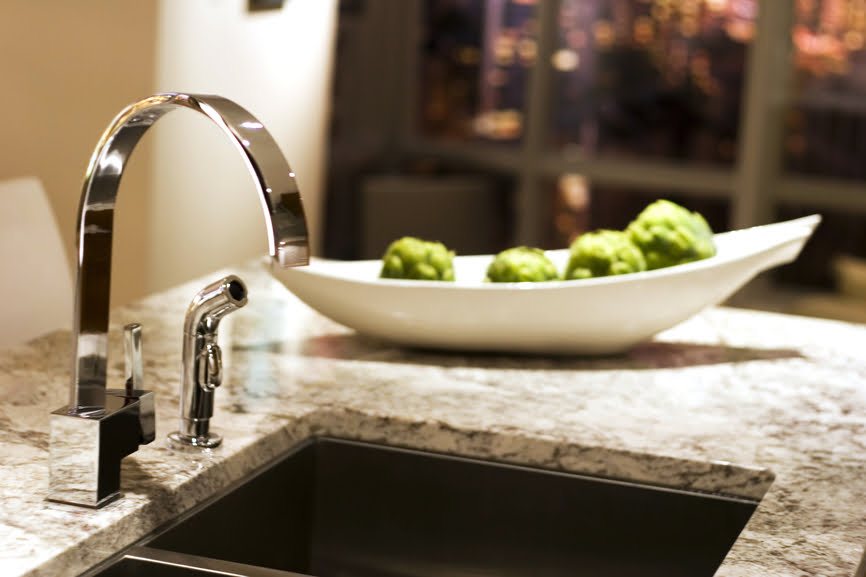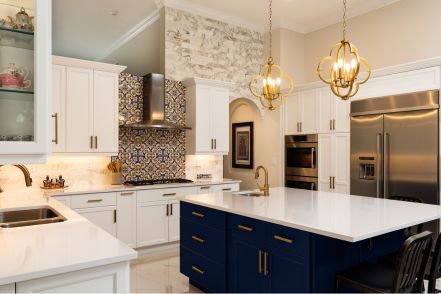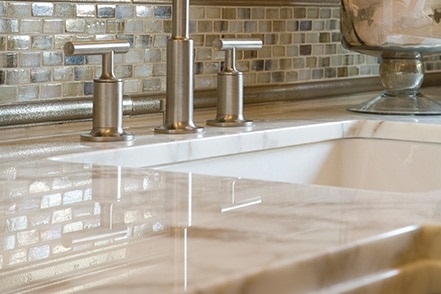
Not all granite is created equally, and high-end granite is truly the best of the best. As a natural product, each slab certainly has flaws and exceptional characteristics — that’s what makes it so unique and beautiful. However, there’s a big difference between an actual flaw and an unexpected color or pattern.
Granite, kind of like a diamond, can run the gamut from flawless to subpar. However, unlike most other materials, the cost of granite doesn’t necessarily reflect its quality. Granite is a catchall phrase to mean a slab that’s made of quartz or feldspar, along with a host of other minerals. Granite’s value is determined by the concentration of soft minerals, the color and cut. Also like diamonds, a unique color (such as rich blues or reds) can go for a higher price. Most granite features natural tones, such as beiges or grays with perhaps a hint of color. However, the cut is completely up to the manufacturer—all granite needs to be cut into manageable slabs. Plus, the bigger the slab, the higher the price will be, since some homeowners want one massive, solid slab to create the kitchen of their dreams.
Grading is technically part of the granite industry, but there’s no across-the-board system, and granite retailers still tend to assign grades to granite slabs. Those grades might be unique to the retailer, so due diligence is necessary to ensure you’re getting the grade you deserve (or want, in this case). The lowest grade is often called second choice or commercial. It has many soft minerals, not much variation in color and the cuts might not be ideal for most buyers. However, it’s still a better, more beautiful choice than Formica.
Luxury You Can Afford
The highest grades are often called exotic and have variations, patterns or colors that are truly one of a kind. These slabs are also more durable since there’s no excess of soft minerals. However, bear in mind that what one retailer considers mid-range might be exotic to another. The good news is that even non-experts can usually tell the difference between high-end and low-end granites. If it stops you in your tracks and makes you look twice, it’s probably higher end.
Another value indicator is the country of origin. For example, Chinese granite is often lower quality because labor practices aren’t as fair as in some other countries — leading to mediocre cutting results. Some of the best granite comes from Brazil and Italy. Plus, granite is heavy, so of course shipping costs are high. The farther your granite has to travel, the more it’ll cost in logistics alone. Luckily, the United States unearths some incredible granite.
Finally, the answer to the big question: Yes, size really does matter when it comes to granite. The thicker the slab, the higher the quality and the greater the durability. The ideal thickness for counters is at least 1 1/4-inch.
Now that you know how to tell high-end from low-end granite, you can start shopping for your new countertops! Creative Granite & Design offers a wide array of granite and natural stone options to fit any budget. Call today or stop by the showroom to find your perfect granite match.





